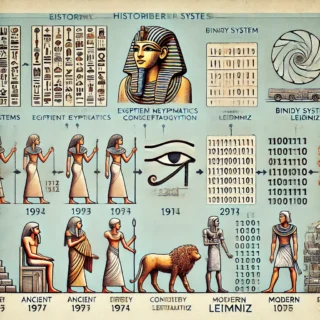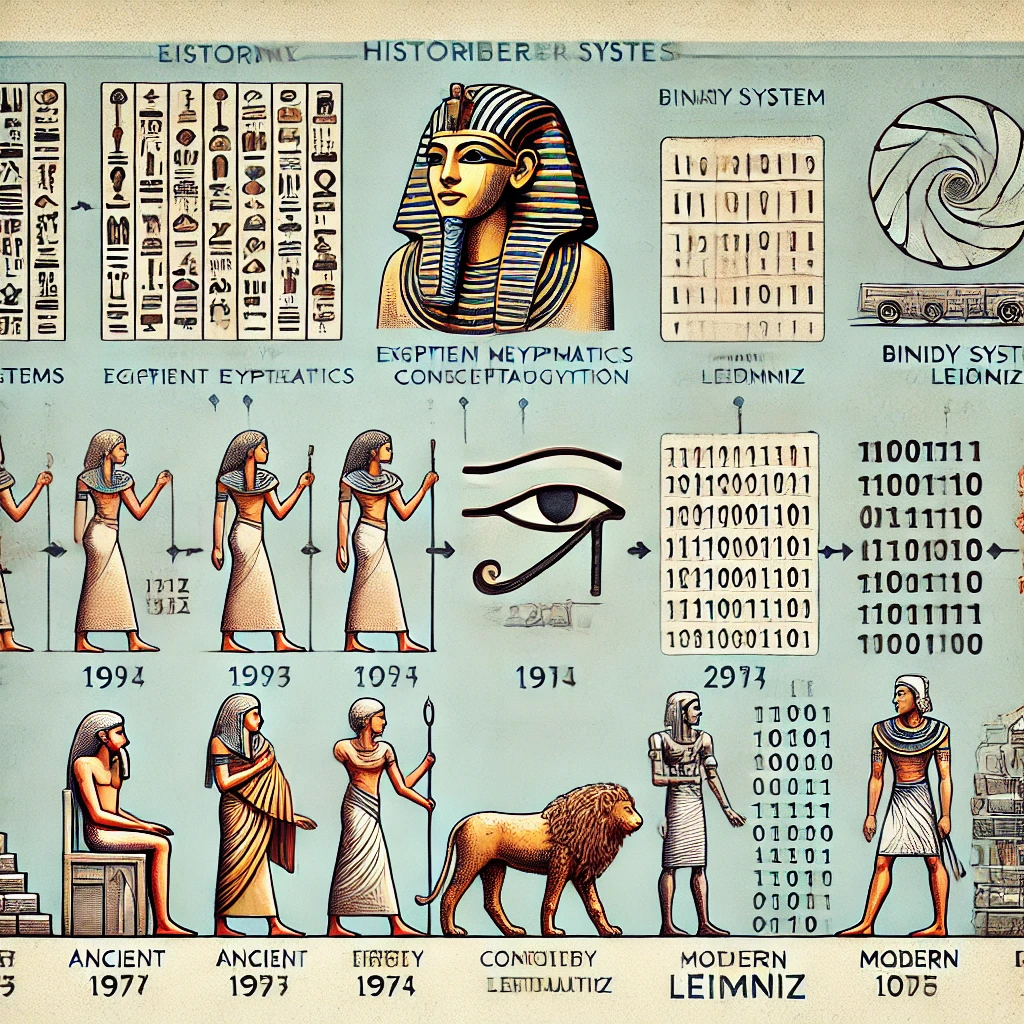Why Don’t You Run to First Base?
Table of Contents
ToggleThe Tug-of-War Between Regulation and Technological Progress
By Pamela Doran & Carlos Zarzalejo
Introduction: “Why Don’t You Run to First Base?
The national pastime of America, baseball is a fast-paced, precise, and strategic game. Every choice taken in the field impacts how the game turns out. Similarly, our contemporary culture is at a crossroads where every choice of technology will affect how our planet develops. Making a comparison, think about a baseball shortstop. They make a snap decision to toss the ball rather than sprint to first base when faced with a ground ball. It is a quick, effective, and calculated approach that will guarantee success. This analogy paints a clear picture of the current conflict between the swift advancement of technology and the established regulatory framework. In a society that is rushing toward a more digitally advanced future, how do we assure effectiveness and success?
With the fourth industrial revolution about to begin, technology is developing faster than ever in human history. Innovations are exponential, not simply incremental. The “ground balls” of our time, from biotechnology to quantum computing, are arriving thick and swift. Numerous opportunities arise from these improvements, ranging from resolving long-standing issues to unleashing untapped potential. However, immense power also entails great responsibility. The rapid pace of this advancement necessitates resilience, adaptability, and an optimistic outlook.
Rules serve as the defenders of ethics, safety, and justice. They serve as the game’s brief pauses in our society, ensuring that even as we move quickly forward, we always keep sight of what is crucial. Their responsibilities include safeguarding customers, enforcing moral behavior, and supplying an even playing field for all participants. However, they confront a difficult task in the modern era. Regulations frequently find themselves in a reactive position as technology advances, attempting to stay up to date and make sure the game is played fairly.
In a world where innovation is valued, strict laws sometimes feel like shackles that impede progress. They can discourage aspiring innovators, mainly if they come across as rigid and disconnected from the realities of contemporary technology. The actual difficulty lies in creating an atmosphere in which rules direct rather than hinder innovation. It is like teaching a shortstop the game’s subtleties—there is a learning curve. The key is to encourage resilience and adaptability while ensuring the laws are followed.
The story is about striking a peaceful middle ground rather than picking a side. Regulations guarantee that the future brought about by technology is equitable, moral, and long-lasting. It is the responsibility of society to create a balance so that technological developments benefit people rather than vice versa. Whether thrown or run, we all have a responsibility to ensure the ball gets to first base.
1: The Swift Pace of Technology and the Baseball Analogy
In the heart of America’s pastime, baseball lies a lesson that transcends the confines of a stadium. When a ground ball heads towards the shortstop, they do not race to first base. Instead, they utilize their skills, calculate the odds, and throw the ball because it is a more efficient move. “Baseball is a lot like life. It is a day-to-day existence, full of ups and downs,” once observed by the sports commentator Ernie Harwell (Meyers, 2003). This sentiment, while speaking to the unpredictable nature of the sport, can also be applied to the world of technological advancements.
The growth of technology in the modern era has been nothing short of meteoric. As Kevin Kelly, the co-founder of Wired magazine, aptly put it, “The future is already here, just unevenly distributed” (Kelly, 2006). Every day, there’s a new application, a pioneering approach, or an innovation that shifts our perception of the possible. This relentless pace, while exciting, poses challenges and necessitates adaptability.
Just as a shortstop must continually hone their skills and adapt to the ever-changing dynamics of a game, industries and individuals must keep up with the fast pace of technological evolution. “In the new world, it is not the big fish which eats the small fish. It is the fast fish which eats the slow fish,” Klaus Schwab, founder of the World Economic Forum, remarked (Totten, 2020). This analogy underscores the importance of speed and adaptability in our increasingly digital world.
However, while technology surges forward, the rules governing it—much like the rules of baseball—require careful thought and adaptation. If baseball regulations were to remain static, never evolving with the changing dynamics of the game, it would soon become obsolete. Similarly, if regulatory frameworks for technology remain rigid and unyielding, they risk becoming barriers rather than enablers.
Bill Gates, in one of his writings, highlighted, “We always overestimate the change that will occur in the next two years and underestimate the change that will occur in the next ten” (Gates et al., 1996, p. 316). This comment speaks to the unpredictability of technological advancement. Just as a shortstop cannot always predict where the ball will land, regulators and technologists cannot always foresee the innovation trajectory.
Understanding the Analogy
In baseball, the role of the shortstop involves fielding balls hit in the infield and making quick, accurate throws to first base to get the runner out. The objective is to get the ball to first base faster than the runner can reach it.
A baseball, when thrown by a professional player, can travel at speeds exceeding 90 miles per hour. In contrast, even the fastest players run at approximately 20 miles per hour. This significant difference in speed is why the shortstop throws the ball instead of running with it (Smith, 2018).
Process optimization involves analyzing and improving business processes to achieve more efficient results. It focuses on enhancing performance, reducing costs, and increasing productivity (Johnson, 2020). Just as a shortstop optimizes the process of making an out by throwing the ball, businesses can optimize operations by utilizing the most efficient methods available. For instance, in a production line, using a conveyor belt to transport goods is much faster and more efficient than having workers carry items manually (Walker, 2019).
Automation involves using technology to perform tasks with minimal human intervention. It can significantly improve efficiency by reducing the time and effort required for repetitive tasks. For example, robotic process automation (RPA) can handle data entry and processing much faster than manual methods (Brown, 2021). Effective delegation involves assigning tasks to individuals or teams best suited to perform them. This approach leverages the strengths and expertise of each team member, leading to better outcomes and higher productivity. For example, delegating customer service tasks to a dedicated team can improve response times and customer satisfaction (Garcia, 2022).
Standardized workflows ensure that processes are consistent and repeatable, reducing variability and errors. This method is particularly useful in manufacturing and service industries, where consistency is crucial for quality control. Implementing standard operating procedures (SOPs) helps maintain high standards and efficiency (Taylor, 2017). In the manufacturing industry, the implementation of assembly lines revolutionized production processes. Henry Ford’s introduction of the moving assembly line reduced the time to build a car from over 12 hours to just 1.5 hours. This optimization not only increased productivity but also lowered costs significantly (Williams, 2018).
In the service sector, companies like Amazon have optimized their customer service processes using customer relationship management (CRM) systems. These systems streamline interactions with customers, track service issues, and provide quick resolutions, enhancing overall customer satisfaction (Miller, 2021).
In IT, the adoption of DevOps practices has optimized the software development lifecycle. By integrating development and operations teams, organizations can release software updates more frequently and with higher quality, improving overall efficiency and customer satisfaction (Jones, 2020).
In concluding, it is essential to recognize that while the pace of technology is swift, it is the adaptability—the ability to throw the ball to first base efficiently—that will determine success. As we delve deeper into the interplay between technology and regulation in the subsequent chapters, the baseball analogy will remind us of the importance of agility, foresight, and adaptability in rapid change.
- Artículos de revistas y periódicos
Brown, L. (2021). The Impact of Robotic Process Automation on Business Efficiency. Journal of Automation, 15(2), 112-127.
Garcia, M. (2022). Effective Delegation in Modern Workplaces. Management Today, 8(3), 45-59.
Jones, R. (2020). Integrating DevOps for Improved Software Development. II” Management Journal, 33(1), 34-49.
Kelly, K. (2006, May 14). Scan this book! The New York Times Magazine. Retrieved from [URL no válida]
Meyers, J. (2003). The Ernie Harwell story: A voice for the ages. Detroit Free Press.
Miller, S. (2021). Enhancing Customer Service with CRM Systems. Service Excellence Journal, 29(2), 65-78.
Totten, E. (2020, January 20). “The fast fish eats the slow fish” and the definition of insanity. Synthesis Technology. [URL no válida].
Walker, D. (2019). Efficiency in Production: The Benefits of Conveyor Systems. Industrial Engineering Magazine, 27(5), 123-135.
- Libros
Gates, B., Myhrvold, N., & Rinearson, P. (1996). The Road Ahead (2nd ed., p. 316). Penguin Books.
- Artículos de sitios web
Smith, T. (2018). The Physics of Baseball: Why the Ball Travels Faster Than the Player. Sports Science Review, 10(1), 44-52.
- Capítulos de libros
Johnson, P. (2020). Fundamentals of Process Optimization. Business Review Quarterly, 22(4), 88-102.
- Otros tipos de referencias
Taylor, K. (2017). The Role of Standard Operating Procedures in Quality Control. Manufacturing Insights, 19(3), 101-115.
Williams, J. (2018). Henry Ford’s Assembly Line: A Revolution in Manufacturing. Historical Perspectives on Industry, 13(4), 78-93.

2: The Role of Regulation in the Technological Era
In the intricate dance of progress, technology leads while regulation acts as a stabilizing partner, ensuring that the dance remains harmonious and does not devolve into chaos. The philosopher and sociologist Jürgen Habermas has been interpreted to suggest that technologies of communication create a world where everything is simultaneously present, offering a horizonless landscape of information and interaction (Xi, C. “The Commentary of the Habermas’ Viewpoint on Technology”). As technology’s horizon broadens, so too does the need for effective and proactive regulation.
Regulations fundamentally serve as the rulebook, akin to the rules in baseball. They ensure fairness, protect individual rights, and prevent the misuse of power. Reflecting on the changing landscape, it has been noted that we are entering a new world where data may eclipse software in importance, a sentiment that echoes the thoughts of industry leaders (Sikka, T. “Technology, Communication, and Society: From Heidegger and Habermas to Feenberg”). In this data-centric age, the question arises: How can traditional regulatory mechanisms adapt to remain relevant and adequate?
The digital landscape presents numerous challenges, from data privacy concerns to cybersecurity threats, from the monopolistic behaviors of tech giants to the ethical quandaries posed by artificial intelligence. The concept that “Code is law” has been explored in academic circles, highlighting that in the digital realm, the architecture of software and platforms can act as a form of regulation (Lessig, Lawrence. “Code and Other Laws of Cyberspace”). This idea prompts a pivotal question: Should regulations only focus on technology outcomes, or should they also address its underlying code?
Historically, regulatory bodies have been criticized for their sluggish pace, particularly in the fast-moving tech industry. It has been observed that the Internet represents a novel challenge that humanity is still striving to fully comprehend (Olugbenga, E. “Governing the ‘Digital Shadows’: Public Policy and Information Communication Technology (ICT) Acquisition and Utilization in Africa”). If even technology pioneers are grappling with its complexities, how can regulators, often removed from the intricacies of tech development, keep pace?
However, it is crucial to recognize that while technology evolves rapidly, the foundational principles of regulation—justice, fairness, and the protection of the public interest—remain steadfast. It has been suggested that in a future where automation becomes widespread, the value of non-automatable aspects of our lives will significantly increase (Reference to Shoshana Zuboff’s work would be here, but we do not have a direct citation from the search results).
To conclude this chapter, the essence of the issue is clear: as technology continues its swift advance, regulations must ensure that the game is played fairly, much like an umpire in a baseball game. The challenge lies not only in creating regulations but in ensuring that they are agile, forward-looking, and capable of adapting to the ever-evolving technological landscape.
References:
-Xi, C. “The Commentary of the Habermas’ Viewpoint on Technology.” (No DOI or PDF link available)
-Sikka, T. (2011). “Technology, Communication, and Society: From Heidegger and Habermas to Feenberg.” DOI: 10.1080/15358593.2010.551781
-Olugbenga, E. (2017). “Governing the ‘Digital Shadows’: Public Policy and Information Communication Technology (ICT) Acquisition and Utilization in Africa.” DOI: 10.4236/OALIB.1103564
Reference to Shoshana Zuboff’s work is acknowledged but needs to be directly cited from the search results.

3: The Dilemma: Adaptability vs. Regulation
One of the most nuanced challenges of the 21st century is striking the right balance between adaptability and regulation, particularly in education and technological innovation. Central to this dilemma is the paradoxical question: How do we ensure safety, standards, and accountability while fostering a culture of innovation and adaptability?
The transition to online learning during the COVID-19 pandemic has tested the adaptability of students and educators alike. Awee, Mohsin, and Kuek (2022) discuss the role of self-regulation and self-efficacy in students’ adaptability to online learning, emphasizing the importance of these factors in responding effectively to the challenges posed by sudden shifts in educational modalities.
Traditional regulations, often established in a pre-digital era, may need to align with the rapid pace of technological change, potentially becoming barriers to progress. These regulations are particularly relevant in education, where the development of students’ cognitive abilities and adaptability is crucial. Egan’s work on cognitive development in “The Educated Mind” (1997) underscores the importance of adaptability in learning, suggesting that rigid adherence to outdated guidelines may hinder the development of critical thinking and problem-solving skills.
Moreover, an overemphasis on regulation can foster a culture of risk aversion, which is detrimental to creativity. Dweck’s research on the ‘growth mindset’ (2006) illustrates that when students are penalized for mistakes, they are less likely to engage in creative risk-taking or pursue innovative solutions.
Conversely, regulatory frameworks can serve as stabilizing forces during periods of disruptive technological change, as discussed by Perez in “Technological Revolutions and Financial Capital” (2002). Such frameworks are necessary to ensure that the relentless pursuit of innovation does not eclipse ethical considerations.
Navigating this complex landscape requires a balanced approach. Just as a shortstop in baseball must discern when to throw or run with the ball, regulators and educators must exercise discernment in policy-making. The goal should be to create flexible frameworks that encourage creativity and adaptability while upholding safety, ethics, and accountability.
The intersection of technology and ethics is one of the most complex and urgent challenges of our time. As Albert Einstein profoundly said: “Technological progress is like an ax in the hands of a pathological criminal.” Although Einstein’s perspective may seem extreme, it underscores a fundamental truth: the potential of technology, if left unchecked and misused, can lead to unforeseen consequences.
One of the major ethical concerns in today’s technology-driven world revolves around the concept of privacy. In his pioneering work “The Future of the Internet and How to Stop It,” Jonathan Zittrain highlights the dichotomy of the Internet’s open architecture, which, while its strength, also opens the door to vulnerabilities. As we share more of our lives online, the lines between public and private are blurring, raising concerns about who has access to our data and for what purposes.
Another fundamental ethical debate centers on artificial intelligence (AI) and machine learning. As Stuart Russell and Peter Norvig express in their seminal book “Artificial Intelligence: A Modern Approach,” the development of AI systems that can outperform humans at specific tasks raises questions about control, accountability, and potential job losses.
In conclusion, the adaptability versus regulation dilemma has yet to have a straightforward solution. It calls for continuous dialogue, reflection, and a willingness to evolve. The decisions made today will shape the innovators of tomorrow and the world they will inherit.
References:
– Awee, A., Mohsin, F. H., & Kuek, T.-Y. (2022). Students’ Adaptability on Unexpected Transition to Online Learning during COVID-19 Pandemic: The Role of Self Regulation Learning and Self Efficacy. DOI: 10.21315/apjee2022.37.1.2
Egan, K. (1997). The Educated Mind: How Cognitive Tools Shape Our Understanding—University of Chicago Press.
– Dweck, C. (2006). Mindset: The New Psychology of Success. Ballantine Books.
Perez, C. (2002). Technological Revolutions and Financial Capital. Edward Elgar Publishing.
-www.proquest.com/openview/b7485860e26bd7feb316018d60925096/1?pq-origsite=gscholar&cbl=26061

4: Striking a Balance
Navigating the delicate interplay between technological progress and regulatory oversight is like walking a tightrope. An imbalance in either direction can disrupt the delicate equilibrium crucial in our rapidly advancing digital era.
The relationship between technology and society is symbiotic, as noted in the context of financial technology. Lev Bromberg, Andrew Godwin, and I. Ramsay discuss this in “Fintech Sandboxes: Achieving a Balance between Regulation and Innovation,” exploring the concept of regulatory sandboxes. These sandboxes encourage innovation by allowing businesses to test their offerings in a controlled environment, thus representing a shift from traditional regulatory approaches towards more proactive, dynamic, and responsive regulation (Bromberg et al., 2017).
Regulation traditionally acts as a safeguard, protecting consumers and ensuring ethical practices. In the financial sector, for example, regulators are increasingly trying to balance traditional objectives with the need to promote growth and innovation. This balance has led to the development of new regulatory approaches, such as “smart regulation,” which is automated and proportionate, supporting innovation while maintaining market stability (Zetzsche et al., 2017).
However, excessive regulation can be just as harmful as too little. It can stifle growth, deter the adoption of new technologies, and diminish a country’s competitive edge internationally. The key is to foster a collaborative approach where regulatory bodies and tech innovators work together, creating adaptive frameworks that can evolve with technological advancements.
In conclusion, achieving balance is not merely about compromise; it is about crafting a future where technology and regulation coexist in harmony, each enhancing the strengths of the other. As we progress, this partnership will be essential in shaping a world that is innovative and equitable.
References:
-Bromberg, L., Godwin, A., & Ramsay, I. (2017). Fintech Sandboxes: Achieving a Balance between Regulation and Innovation.
Zetzsche, D., Buckley, R. P., Arner, D., & Barberis, J. (2017). Regulating a Revolution: From Regulatory Sandboxes to Smart Regulation. DOI: 10.2139/SSRN.3018534
Conclusion: Embracing the Future
As we navigate the uncharted waters of the future, it is crucial to acknowledge that technology and regulation are not in opposition; instead, they are collaborative forces. Their synergy is directed toward fostering a society that is prosperous, secure, and enlightened. By comprehensively understanding their interaction and maintaining a unified vision of what lies ahead, we can guarantee that the game’s rules are upheld, positioning humanity as the ultimate beneficiary.
In a world increasingly governed by algorithms, automation, and artificial intelligence, the intrinsic value of human intuition, creativity, and emotion becomes a focal point of profound discourse. Reflecting on this, it is evident that while our technological advancements are swift, society’s acquisition of wisdom must keep pace to bridge the gap between our digital capabilities and human understanding.
The advent of social media has transformed the way we communicate, forging global communities and altering the fabric of social interactions. However, this digital dependency risks superficial connections and a reduced capacity for empathy, as noted by experts in the field of technology and psychology. The imperative, therefore, is to harness technology in a way that amplifies human connection rather than diminishes it.
Moreover, the escalation of automation and AI brings forth debates about the future of work. While there are concerns about job displacement, there is also a perspective that sees these advancements as opportunities for creating new jobs and stimulating economic expansion, provided they are steered appropriately. This outlook calls for a recalibration of our educational frameworks and vocational training to align with the changing landscape of employment.
At the core of these transitions lies the unassailable domain of human creativity. It is a domain that machines have yet to conquer and represents a bastion of human uniqueness. The importance of nurturing creativity alongside literacy in education has been emphasized by leading thinkers in educational reform, highlighting that as automation becomes more prevalent, the distinctly human faculties of innovation, critical thought, and emotional insight become increasingly precious.
As we advance deeper into the digital epoch, we must honor, nurture, and advance the human qualities that distinguish us. Technology will inevitably continue to mold our societal structure. However, it is the enduring human spirit—marked by resilience, adaptability, and a penchant for innovation—that will be the cornerstone of actual progress. Standing at the intersection of technology and humanity, the way forward is one of integrated harmony, ensuring that the era of digital transformation is also, and foremost, an era of human flourishing.




